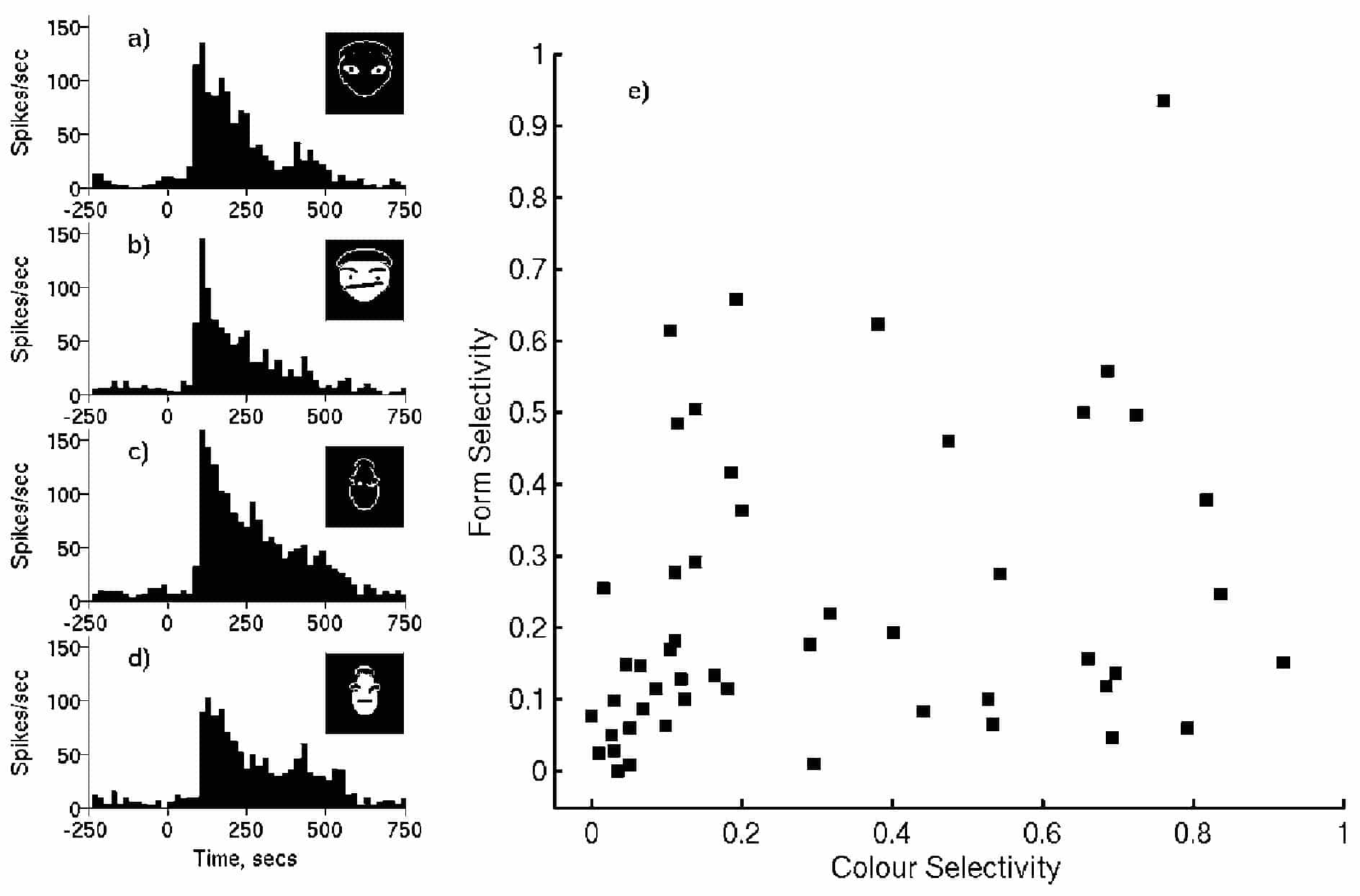We used conventional techniques* (Jagadeesh et al. 2001) to record from neurons in the anterior inferotemporal cortex and superior temporal sulcus of two monkeys (Macaca mulatta) while they performed a delayed match to sample visual recognition memory task using computer-generated cartoon faces 1.8-2.9° in height. We wished to test the relationship between colour and form preferences.
Each trial began with the presentation of a fixation target. When the monkey had fixated within a 3° square window centred on the target, a sample face, selected at random from the training set, was presented at fixation for 300 msecs. After the sample was turned off, two faces, one identical to the sample, the other differing either in colour or in form (shape), were presented 5.4 degrees to the left of the fixation target, one 5.4 degrees above and the other 5.4 degrees below. The monkey’s task was to wait until the fixation point was turned off and then to make a saccade to the face that was identical to the sample. Both monkeys performed 800-1500 trials per day of this task to earn their daily water. They consistently performed above 90 % correct using a new set of 8 or 16 faces each day.
Once a neuron had been isolated, a set of four faces (two different colours and two different shapes) was selected to test its preference for colour and shape. Responses to each face were measured by taking the peak firing rate, measured over 100 msecs, from the peristimulus time histogram (see Fig. 1a-d). Stimulus preferences (the difference between the responses to 2 stimuli divided by the sum) were measured, from the neurons (50 of 102 recorded) that gave incremental responses of at least 5 spikes/sec. Preferences for colour and for shape appeared to be separable: within each neuron colour preferences measured with different shapes were strongly correlated and vice versa. Selectivity for colour and for shape appeared to be independent. Figure 1e shows that there was no significant correlation between the degree of selectivity for the two attributes across the population of neurons recorded.
*Experimental protocols were approved by the University of Washington Animal Care and Use Committee and were consistent with UK legislation. Preparatory surgery was carried out under isoflurane anaesthesia followed by prophylactic pain relief and antibiotics at least 2 weeks prior to recording.
This work was supported by:-BBSRC, Wellcome Trust, NIH, McKnight Foundation, Sloan Foundation, Whitehall Foundation

